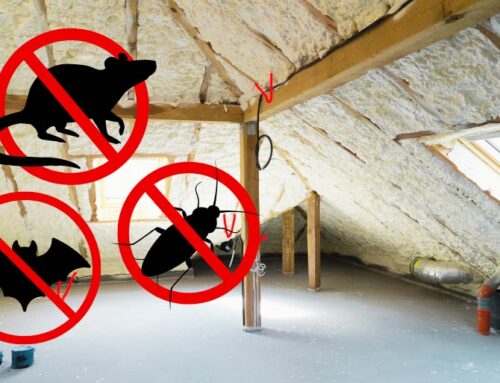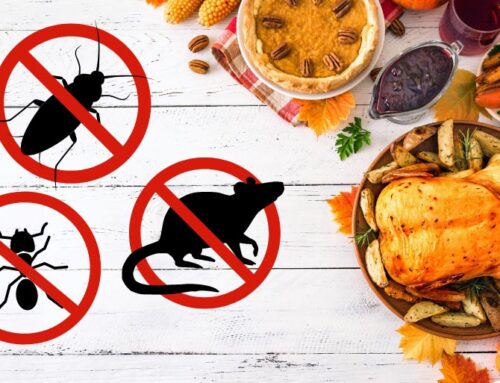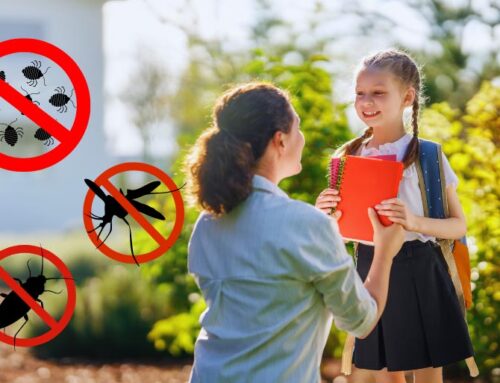As Halloween approaches, your spooky decorations might attract more than just eager trick-or-treaters. Real pests like spiders, stink bugs, and rodents could invade your festive setup, turning your carefully crafted display into a real-life fright.
Whether it’s unwelcome webs on your artificial cobwebs or pests lurking in your pumpkins, taking steps for effective Halloween pest control is crucial to ensuring a truly scare-free holiday.
Here’s how you can safeguard your decorations and keep the real creepy crawlies away this season.
Common Halloween Pests to Beware Of
Before we get into the tips for keeping your Halloween decorations pest-free, it’s important to recognize the usual suspects that might creep into your home during this spooky season.
These critters are known for sneaking into your Halloween decorations, so knowing what to watch for can help you keep them at bay.
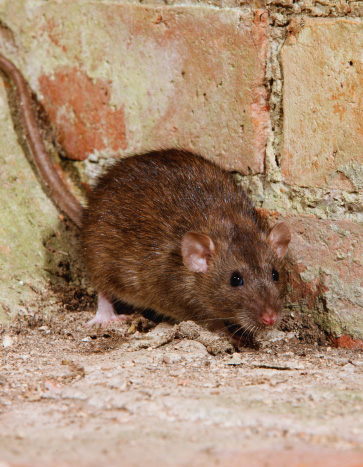
Creepy Rats
As the fall chill sets in, Norway rats in Iowa begin searching for warm spots to nest. Your Halloween decorations, especially those stored in attics or basements, can become their new favorite haunt.
These rodents are infamous for chewing through wood and wires, leading to damage and potential health risks—turning your festive display into an unplanned scare.
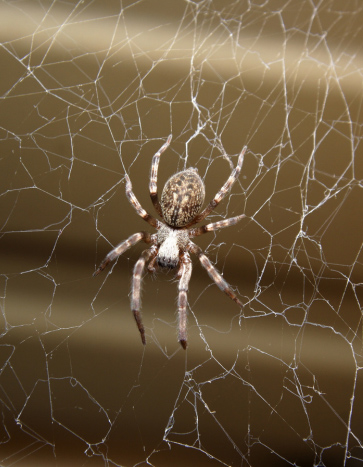
Spooky Spiders
While spiders are a staple of Halloween décor, the real ones are far less charming. In Waterloo, IA, the common house spider often sneaks indoors as the weather cools, finding shelter among your Halloween decorations.
Their webs in hidden corners or draped over your spooky setups can give you an unexpected fright, adding an eerie vibe you didn’t plan for.
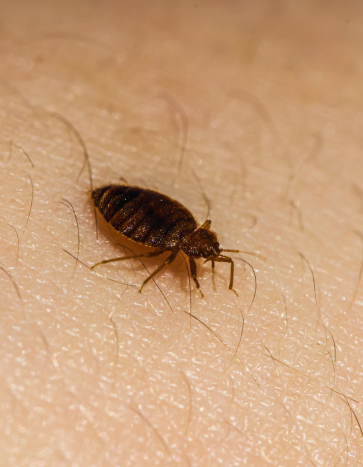
Vampiric Bed Bugs
Bed bugs are the last unwanted guest you want during Halloween. These tiny, blood-hungry pests are widespread in Iowa and can easily stow away on your clothing or furniture, sneaking into your home unnoticed.
Although they typically infest beds, they can also hide in your Halloween props, turning your festive fun into a nightmarish, itchy ordeal with their irritating bites.
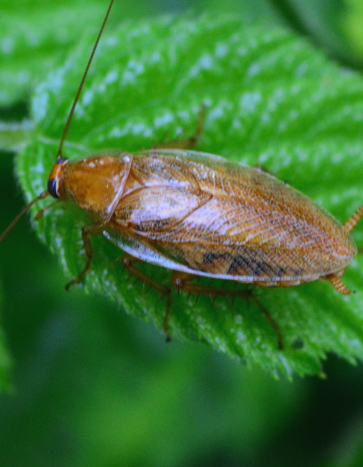
Creepy Cockroaches
In Waterloo, IA, the German cockroach is notorious for lurking in dark, moist areas—perfectly camouflaged within your Halloween decorations. These pests often find refuge in neglected boxes or under pumpkins.
Aside from their unsettling presence, German cockroaches can carry bacteria and allergens, posing a significant health risk to your household.
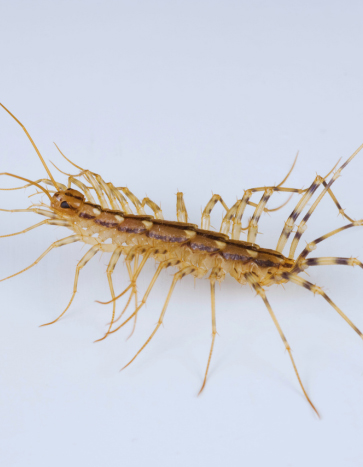
Creepy Centipedes
Centipedes might not be the first pests you think of for Halloween, but in Iowa, they’re common visitors. These quick-moving, many-legged creatures thrive in dark, damp environments, which makes your Halloween decorations an ideal hideaway.
Although centipedes aren’t harmful, their unexpected presence can certainly add an unplanned scare to your Halloween scene.
Knowing the types of pests that could creep into your Halloween setup is essential for maintaining a festive, fright-free home.
By staying alert to these sneaky invaders, you can take steps to protect your decorations and ensure that the only frights this Halloween come from your planned spooky surprises—not from unexpected pests.
Why Pests are Drawn to Halloween Decorations
Now that we’ve covered the most common Halloween pests, it’s crucial to understand why these critters are so attracted to your spooky setups. Knowing what lures them in can help you better safeguard your home against unwanted guests.
The Allure of Pumpkins and Gourds
Pumpkins and gourds are staples of Halloween décor, but they’re also highly attractive to various pests, particularly Halloween bugs. Here’s why:
Dark Corners and Hidden Spaces
Halloween decorations often create dim, secluded areas that are perfect for pests to hide. Here are some considerations:
How Halloween Decorations Mimic Natural Habitats
Many Halloween decorations inadvertently replicate natural environments, drawing pests that are searching for familiar surroundings:
While Halloween decorations add festive cheer, they can also unintentionally attract pests into your home. By recognizing what lures these critters to your spooky displays, you can better prevent and manage potential infestations.
Armed with this insight, you can enjoy a Halloween that’s both eerie and pest-free, ensuring your celebration is all about fun, without the unwanted visitors.
Quick Tips for Halloween Pest Control
Understanding which pests and why they are attracted to your Halloween decorations is only the first step. Now, it’s time to take action with effective pest control strategies. Use these quick tips to protect your festive displays and ensure they remain pest-free.
Incorporate Pest-Repelling Decorations
Begin your pest control efforts by selecting decorations that naturally deter unwanted visitors. Here’s how:
Proper Storage and Handling of Pumpkins
Storing and handling pumpkins correctly can significantly reduce the risk of pest infestations. Here are some steps to follow:
Regular Cleaning and Maintenance of Decor
Keeping your Halloween decorations clean and well-maintained is crucial for preventing pest problems. Here’s how to do it:
By implementing these straightforward pest control strategies, you can protect your Halloween decorations from unwelcome pests. Acting now guarantees a festive season where your decor stays secure and free from infestations.
Long-Term Pest Prevention Strategies
While quick solutions can help keep pests away during Halloween, adopting long-term strategies is essential for preventing infestations throughout the year. Here’s how you can safeguard your home well beyond the spooky season.
Sealing Entry Points
Pests often find their way indoors through small, unnoticed gaps and cracks. Sealing these entry points is crucial for long-term pest control. Focus on these areas:
Professional Pest Control Solutions
For a comprehensive and lasting approach, professional pest control services offer personalized solutions to keep pests at bay. Here’s what they provide:
By incorporating these long-term strategies, you can keep your home free from pests well beyond the Halloween season.
Taking action to seal entry points and considering professional pest control services will help ensure your home stays secure and pest-free all year long.
What to Do If Pests Invade Your Halloween Decorations
Even with the most diligent prevention efforts, pests can sometimes infiltrate your Halloween decor. Here’s how to effectively address the situation, from spotting the problem to knowing when to seek professional help.
Recognizing the Infestation
The first step in tackling a pest issue is to identify it. Keep an eye out for these signs:
Safe Removal and Cleanup
Once you’ve confirmed an infestation, follow these steps to safely remove the pests and clean the affected area:
When to Contact a Professional
Sometimes, it’s best to bring in professional pest control services. Here’s when you should consider reaching out to the experts:
Managing pests in your Halloween decorations can be challenging, but taking swift action and following these steps will help minimize the damage, allowing you to fully enjoy the holiday season again.
And if the situation feels overwhelming, remember that professional help is just a phone call away, ensuring your home stays pest-free and ready for festive fun.

About the Author
Blake Marshall, Owner/Operator of Bobcat Wildlife and Pest Control, Waterloo. A skilled tradesman turned pest expert, Blake launched the franchise in 2020. With a motto of excellence, he ensures superior pest solutions in Waterloo and beyond. His dedication and diverse experience make Bobcat a trusted choice for wildlife and pest management.

